Nothing beats a gorgeous bouquet when you’re down. The variety of colors and blooms makes you smile. Not to mention the soft scent of all those mingling perfumes. As you set the flowers in the center of the table to admire them properly, though, do you know the risk they may pose? Some of our favorite plants – and the flowers most often assembled in popular bouquets – carry toxins that can land your cat or dog in the hospital. And it may take no more than a quick nip at a flower or leaf! Despite their beauty, toxic plants pose a genuine threat to pet owners. If you aren’t aware of the threats lurking in your garden and home, this is the post for you. We’ll explain the hazards and list some of the most common (and popular) toxic plants.
Nature Green
Alfred, Lord Tennyson wrote a poem titled “In Memoriam A.H.H.” He used the phrase “nature, red in tooth and claw.” Scientists like to use the phrase to refer to the evolutionary advances of animals. Since the beginning of time, they’ve developed better teeth, claws, and hunting practices to survive. It’s a handy image, but it leaves out an important part of the life on the planet: plants.
The greener things out there have their own “teeth and claws.” But they come in a subtle form (exempting the carnivorous plants – some of which DO have teeth). These toxic plants evolved chemical compounds that cause irritation, poisoning, and even death. Animals learn to avoid them when they end up sick after ingesting leaves, flowers, or fruits. And if they’re in a pack? The others recognize the lesson.
But cats and dogs in our homes? They don’t have access to that knowledge. And the results aren’t pretty.
Toxic Plants and Cats and Dogs
The ASPCA Animal Poison Control Center receives THOUSANDS of calls every year. And in mid-March, they mark National Poison Prevention Week with a report on their top ten toxins. In 2020, out of the 370,500 calls they took? Bouquets and plants ranked FIFTH, jumping over NINE THOUSAND calls higher than in 2019. That’s scary.
It’s because toxic plants are tricky. Sometimes your dog or cat only needs to take a tiny nibble to end up in the hospital. Other times? They may need to eat the entire plant before you see signs. Then there’s the problem that plants often keep higher concentrations of their chemicals in different parts (for instance, in the berries or leaves). But in some plants? EVERYTHING is equally devastating. This is why you’re best bet is to keep any of these risky green things as far from your home as possible.
Before you decide to add a plant to your yard or home, look up the scientific name (many plants share the same common name). The ASPCA keeps a list of toxic plants for cats and dogs (though most overlap). NEVER rely on a worker at the nursery to know for sure whether a flower or plant is safe, as they may not have that information. Make sure you do your own homework.
Recognizing Signs and Symptoms of Toxic Plant Poisoning
Every plant’s different. So you won’t necessarily see the same warning signs if your cat or dog decides to snack on your bouquet. (And, in some cases, they only need to TOUCH the plant!) Irritation is the biggest reaction to most toxic plant chemicals, and it can go from nose to tail, wreaking havoc on your poor furry friend.
Depending on the strength of the chemical compound in the plant, you may see any of the following symptoms when your cat or dog ends up exposed to a toxic plant:
- Drooling
- Trouble swallowing
- Vomiting/Diarrhea
- Abdominal pain
- Decreased appetite
- Increased OR decreased thirst
- Increased OR decreased urination
- Lethargy
- Weakness
- Fast, slow, OR irregular heartbeat
- Unresponsiveness
Toxic Flowers
Flowers brighten up people’s days. Whether they’re sitting on a windowsill, adorning a bedside table, or creating a rainbow in a garden. Even if you struggle with allergies, you can sit behind a window and appreciate the variety of colors and shapes that flowers bring throughout the year. Unfortunately, some of the most popular flowers also fall on the list of toxic plants. You’ll want to avoid keeping them in and around your house to keep your cats and dogs safe. If you still want to add spots of brightness, opt for safer versions.
Amaryllis
- Varieties: Amaryllis
- Scientific Name: Amaryllis spp.
- Description: The Easter season tends to bring out these vibrant blooms. They also pop up in gardens in the early spring. You can easily recognize their trumpet-shaped flowers.
- Hazard: You’ll find phenanthridine alkaloids throughout the plant, though they concentrate in the bulbs. The toxin goes after the GI tract. You’ll see drooling, vomiting, diarrhea, a loss of appetite, and possibly even hypotension and tremors if your cat or dog eats enough of the plant.

Autumn Crocus
- Varieties: Autumn Crocus, Meadow Saffron, Naked Lady
- Scientific Name: Colchicum autumnale
- Description: As you might guess from the name, you see these flowers blooming during the fall. They resemble crocuses, which bloom in the spring, but they belong to a different family.
- Hazard: EVERY part of the crocus is toxic. This plant produces a chemical known as alkaloid colchicine, and it attacks every part of the body – especially in cats. You can see trouble breathing, issues with the GI tract, liver damage, kidney issues, or seizures. Sometimes, pets die if they ingest enough. And this toxic plant? It can cause symptoms right away OR days later.
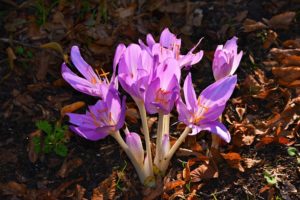
Azalea
- Varieties: Azalea, Rhododendron
- Scientific Name: Rhododendron spp.
- Description: You can find over ONE THOUSAND species of these popular shrubs and their colorful flowers. People love using them outside their homes, and the blooms appear in the early spring.
- Hazard: Azaleas produce a poison known as grayanotoxin, and it’s in EVERY part of the plant. But not every species has the same level of poison. So you can see GI upset, heart arrhythmias, seizures, OR death.
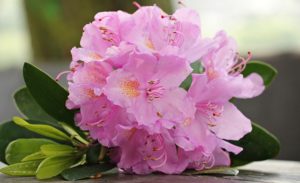
Begonia
- Varieties: Begonia
- Scientific Name: Begonia spp.
- Description: You’ll find over TWO THOUSAND species of begonia. They form small flowers that prefer shade, and they hang out in warmer temperatures. Many people keep them inside as houseplants.
- Hazard: The begonia contains oxalate crystals. So your pet gets a burning sensation when they consume the plant, and then they end up with GI upset. Every part of the plant is dangerous, with the worst of the toxin contained within the roots.

Chrysanthemum
- Varieties: Chrysanthemum, Daisy, Mum
- Scientific Name: Chrysanthemum spp.
- Description: Who doesn’t love these giant, colorful flowers? They’re hardy and often enter gardens as the seasons change toward autumn. People consider them a symbol of abundance.
- Hazard: We get pyrethrin from these toxic plants. It’s an effective chemical in the war against fleas and ticks. But in cats? It’s terrible. If they eat enough, they start drooling excessively, lose coordination, and begin tremoring. (And, you guessed it, the toxin exists in every part of the plant)
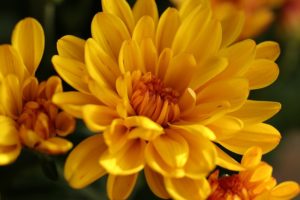
Cyclamen
- Varieties: Cyclamen, Persian Violet, Sowbread
- Scientific Name: Cyclamen spp.
- Description: Perennials (flowers that return year after year), cyclamens grow from a tuber. The flowers feature upswept petals, and you often get patterns on the leaves, making them popular as houseplants.
- Hazard: Primarily in the roots and tuber, you’ll find a compound known as saponin. (Though it’s in the entire plant, too) This toxin starts with GI upset – in small doses. As your cat or dog eats more of the plant, though, signs get worse. They’ll start to experience an increased heart rate, then arrhythmias. Next, come seizures. And if they eat enough? They can die.

Daffodil
- Varieties: Daffodil, Narcissus, Jonquil, Paper White
- Scientific Name: Narcissus spp.
- Description: Who doesn’t wait to see these cheery flowers poke their heads out of the snow, heralding the end of winter and the start of spring? They’re perennials, growing out of bulbs. And plenty of people keep them scattered throughout their garden beds.
- Hazard: In those bulbs, you’ll find the highest concentration of a toxin called lycorine. It’s another toxic plant that starts with GI upset and progresses to cardiac problems as your pet eats more. You DO find the lycorine in the flowers and leaves, but it’s a lower concentration than in the bulb.

Foxglove
- Varieties: Foxglove
- Scientific Name: Digitalis purpurea
- Description: These gorgeous flowers stand tall throughout gardens. The strings of tubular blooms cascade down from the stalks. They usually come in shades of white, pink, purple, red, or yellow.
- Hazard: The irony with this toxic plant is the compound it produces has been used as a beneficial heart medication in the past. Digitalis can lead to cardiac arrest if your dog or cat ingests the plant, though.
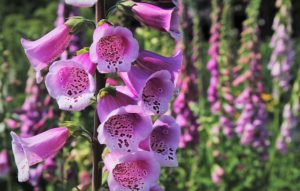
Hydrangea
- Varieties: Hydrangea
- Scientific Name: Hydrangea spp.
- Description: Producing tight clusters of flowers throughout the summer, people love setting up hydrangea shrubs throughout their gardens. The colors of the flowers depend on the pH of your soil, allowing for plenty of variety.
- Hazard: The leaves and flowers contain cyanogenic glycoside – better known as cyanide. If your dog or cat decides to take a bite, they can end up with GI upset. Too much, and they’ll develop difficulty breathing, an increased heart rate, seizures, and possibly pass away. But there’s a slight glimpse of light: hydrangea plants taste BITTER. Most pets usually avoid them (but you shouldn’t count on that).
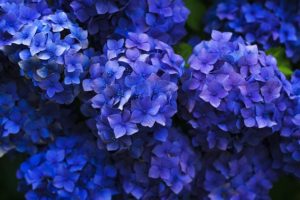
Kalanchoe
- Varieties: Kalanchoe, Mother-in-Law Plant, Devil’s Backbone, Mother-of-Millions, Chandelier Plant
- Scientific Name: Kalanchoe spp.
- Description: These tiny clusters of bright flowers are often kept in pots around the house. They’re a succulent that produces blooms in a variety of different colors.
- Hazard: In every part of the kalanchoe, you’ll find a toxin known as bufadienolides. In small amounts, they’ll cause your pet GI upset. But if your dog or cat happens to eat lots of the plant? That’s where you start seeing heart arrhythmias and seizures.

Lily
- Varieties: Lily, Asiatic Lily, Easter Lily, Japanese Show Lily, Rubrum Lily, Stargazer Lily, Red Lily, Tiger Lily, Western Lily, Wood Lily, Daylily
- Scientific Name: Lilium spp.
- Description: With a dramatic variety of colors and shapes, lilies feature prominently in bouquets and gardens. They begin to appear in the early spring, especially around Easter and Mother’s Day.
- Hazard: Lilies are the bane of cat owners everywhere. EVERYTHING – even the POLLEN – is dangerous. And a tiny amount is enough to spell trouble for feline kidneys. Cats have passed away from drinking the WATER a lily was housed in. And the chemical that causes the problem? No one’s figured that out yet.
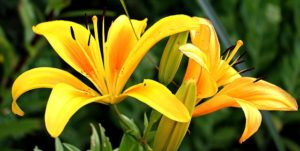
Lily of the Valley
- Varieties: Lily of the Valley
- Scientific Name: Convallaria majalis
- Description: The delicate arches of tiny white blossoms look nothing like your standard lily. The blooms resemble tiny white bells. People find them growing wild in meadows and often add them to their gardens.
- Hazard: Unlike lilies, you find cardiac glycosides in these tiny white flowers. They behave similarly to foxgloves when ingested by your pets, causing heart arrhythmias and even cardiac arrest.
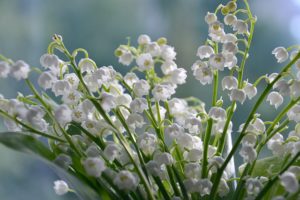
Oleander
- Varieties: Oleander, White Oleander, Rose-Bay
- Scientific Name: Nerium oleander
- Description: If you live in warmer regions, you’ve probably seen this shrub blossoming during the spring and summer. Small clusters of white or pink flowers often pop up in yards and gardens.
- Hazard: Oleander plants contain cardiac glycosides. If your dog or cat chews on them, they can develop heart arrhythmias – some of which may be fatal. And, similar to the lily, even water an oleander plant is sitting in has the potential to spread the toxin.

Tulip
- Varieties: Tulip
- Scientific Name: Tulipa spp.
- Description: Tulips find their way into bouquets and gardens. They come in a rainbow of colors, and people love their large, unique cup-shaped flowers.
- Hazard: Tulips share a family with lilies. And while their toxin isn’t the same, you still need to be careful. These toxic flowers contain tulipalin A and tulipalin B – both of them found throughout every part of the flower. You can see GI upset, lethargy, or tremoring.

The Special Case of the Poinsettia
When people think of toxic flowers, they immediately think of everyone’s holiday favorite: the poinsettia (Euphorbia pulcherrima). It’s drilled into pet owner’s heads to keep this (typically) red flower out of the house to prevent a trip to the hospital. And while the sap from a broken leaf CAN irritate the skin, its place on the toxic plant list is contested. Poinsettias WILL cause your cat or dog some GI upset.

But to cause severe poisoning? Your pet needs to ingest an entire nursery’s worth of the flowers. And the odds of that happening aren’t great.
So while you should still take precautions to keep your holiday flower arrangements out of the reach of curious noses and paws, you don’t need to ban poinsettias. It’s okay to enjoy them.
Toxic Plants
Not everyone enjoys flowers. Some people drift toward the greener side of the plant world. And while keeping plants around to freshen the air in your home is important, some of the most popular varieties out there aren’t as harmless as they appear. A casual nibble of the leaves may result in a trip to the vet. If you choose to have these toxic plants in your home, make sure you keep them in a room your dog and cat can’t access.
Aloe Vera
- Varieties: Aloe Vera
- Scientific Name: Aloe vera
- Description: Aloe is one of the most popular succulents people keep around the house. The thick leaves stretch out in a rosette pattern, with tiny points on the edges. They work for medicinal properties, as well as making attractive ornamental plants.
- Hazard: While helpful to humans, aloe leads to GI upset and even lethargy in dogs and cats. They produce a compound known as anthraquinones which is a purgative, encouraging bowel movements.
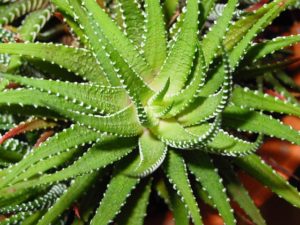
Castor Bean
- Varieties: Castor bean, Castor Oil Plant
- Scientific Name: Ricinus communis
- Description: You’ll find castor beans as shrubs or trees. They have woody stems and form seeds with a tough hull in a brilliant red to attract birds and encourage pollination.
- Hazard: The protein found in this toxic plant may sound familiar: ricin. And it’s one you DON’T want your pets consuming. In small doses, cats and dogs get GI upset. But as more of the plant is consumed? You’ll get dehydration, tremors, seizures, and possibly coma or death.
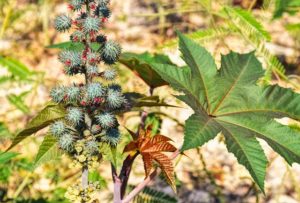
Ceriman
- Varieties: Ceriman, Hurricane Plant, Swiss Cheese Plant, Monstera, Split-LeaF Philodendron
- Scientific Name: Monstera deliciosa
- Description: You can’t help but think of the tropics when you see the ceriman leaves. They pop up in homes everywhere – mostly because they’re easy to care for. (And they look fantastic in photos)
- Hazard: Throughout the plant, you find calcium oxalate crystals. When chewed, your pet will experience irritation in their mouth and stomach. They may also end up with swelling of their face and tongue, making it difficult for them to swallow.

Dieffenbachia
- Varieties: Dieffenbachia, Charming Dieffenbachia, Dumb Cane, Exotica Perfection, Giant Dumb Cane, Gold Dieffenbachia, Spotted Dumb Cane, Tropic Snow, Variable Dieffenbachia
- Scientific Name: Dieffenbachia spp.
- Description: People love the attractive leaves and flowers of this common houseplant. They’re easy to keep, and they grow quickly to fill space.
- Hazard: Similar to ceriman, dieffenbachia plants contain calcium oxalate crystals. Whenever your dog or cat attempts to chew on them, they end up with irritation throughout their mouth and stomach.
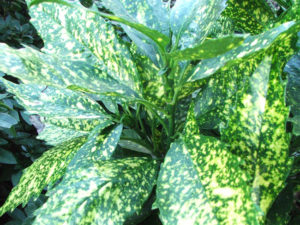
English Ivy
- Varieties: English Ivy, Sweetheart Ivy, Branching Ivy, Glacier Ivy, Needlepoint Ivy, California Ivy
- Scientific Name: Hedera helix
- Description: Ivies always make popular attractions in homes and around gardens. As they grow, they cascade down and cover walls, flowerbeds, or even your shelves. Unhappily, some are now considered invasive species because of how quickly they grow and take over an area.
- Hazard: When it comes to ivy, the leaves are worse than the berries (uncommon in most toxic plants). You find a compound called triterpenoid saponin. It leads to GI upset in your pets.

Jade Plant
- Varieties: Jade Plant, Money Plant, Dollar Plant, Chinese Jade
- Scientific Name: Crassula ovata
- Description: People bring these dark green succulents into their homes as they’re supposed to bring good fortune. Also, they’re easy to manage. (As evidenced by the fact we have one in a hanging planter outside that doesn’t get any attention and is doing fine)
- Hazard: If your pet ingests a small amount, they’ll end up with GI upset. But as they eat more and more, they can end up with a loss of coordination. And the compound responsible? No one’s actually clear on that one.
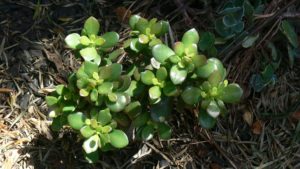
Sago Palm
- Varieties: Sago Palm, Coontie Palm, Cardboard Palm, Cycad, Zamia
- Scientific Name: Cycas revoluta
- Description: If you walk around in tropical regions, you’ll find sago palms towering overhead. But you can also find smaller versions in homes, adding that beachy flair to the sunroom or porch. The spreading leaves all branch out from a central “seed.”
- Hazard: The seed is the worst part of this toxic plant, containing the highest level of cycasin. When your cat or dog nibbles on a sago palm, they impact their liver. You may see GI signs, but then you’ll notice bruising appear. And, unfortunately, even aggressive treatment for this poisoning only has a 50% success rate.
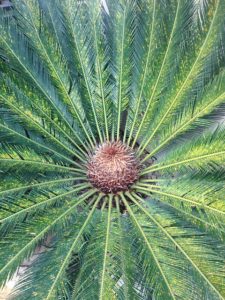
Yew
- Varieties: Yew
- Scientific Name: Taxus spp.
- Description: One of the evergreens, yew shrubs and trees have sleek needles and brilliant red berries. They’re often found in gardens, along pathways, and they’re a common sight in cemeteries.
- Hazard: The yew earned its place in graveyards through its toxin: taxine. When ingested, it starts with GI irritation and quickly progresses to the nervous system. Your dog or cat may struggle to walk; then, they fight to breathe. Death is a common result of yew poisoning.
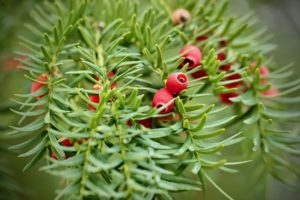
Toxic Food Plants
Plenty of people set up herb and vegetable gardens. There’s something rewarding about growing your own food. And nothing’s better than adding fresh herbs to your meal. They taste much better than the dried versions you get from a jar sitting on the shelf. And while you can get away with offering some fruits and vegetables to your pets, others fall on the toxic plant list.
Chive
- Scientific Name: Allium schoenoprasum
- Description: People use chives in plenty of savory cooking options. The flowers don’t appear in recipes (though they ARE edible), but the leaves are a common addition.
- Hazard: Chives belong to the Allium family, which includes onions, garlic, scallions, and leeks. When dogs and cats ingest these plants, their red blood cells pay the price. The red blood cells rupture, leaving your pet with dangerous anemia.
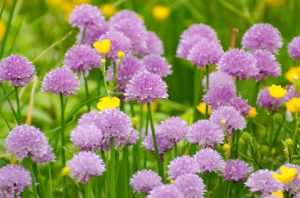
Oregano
- Scientific Name: Origanum vulgare hirtum
- Description: A staple of Italian cooking, plenty of people keep oregano in their herb garden. The herb produces stunning purple flowers, and you’ll see long spikes of the stem poking up from the ground.
- Hazard: We may enjoy some oregano in our diets, but cats and dogs DON’T. They end up with GI upset. But nature is kind. Our pets have the ability to detect the scent of oregano FOURTEEN THOUSAND times better than we can.
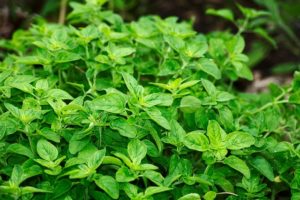
Spanish Thyme
- Scientific Name: Coleus ampoinicus
- Description: You’ll also find Spanish thyme listed under the names Indian borage or Mexican mint. This herb smells and tastes similar to oregano, and the leaves have a feel almost like a succulent.
- Hazard: Rather than the usual GI upset, Spanish thyme runs the risk of genuine irritation to your cat and dog. You may see blood in their vomit or diarrhea.
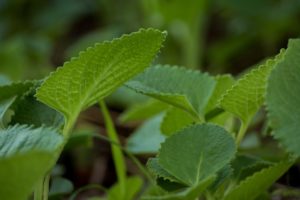
Tomato
- Scientific Name: Lycopersicon spp.
- Description: This red fruit is a favorite addition to almost any meal. You can grill them, bake them, or even eat them raw.
- Hazard: Tomatoes are tricky. The ripe fruit isn’t a big deal for pets. But UNRIPE fruit, stems, and leaves all contain two problem compounds: alpha-tomatine and solanine. Both of them run a risk of causing problems if your dog or cat ingests enough. It may start as GI upset, but more can lead to weakness, lethargy, and confusion.
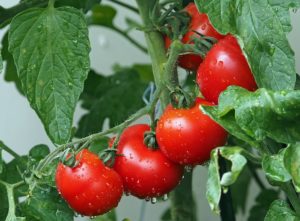
Treatment for Toxic Plant Poisoning
If you see your cat or dog chewing on a toxic plant, you know you need to get them to the vet ASAP. But if you’re not sure? What do you do?
- Look for signs of the plant around your pet. And check for teeth marks on your plants. If you find leaves or flowers in your cat or dog’s mouth, gently remove all the pieces (SAFELY).
- Call the Pet Poison Helpline (1-855-764-7661) or the ASPCA Animal Poison Control (1-888-426-4435). Describe the plant to them if you’re not sure what it may be.
- Take the case number they give you and get to your vet.
The toxic plant you’re dealing with will determine how the veterinary staff proceeds with treatment. They may ask for permission to induce vomiting – for dogs. Unfortunately, it’s extremely difficult to induce vomiting in cats. For felines, the team will proceed to start the therapy needed to counteract the toxin.
Some of the poisons found in toxic plants require hospitalization with fluid therapy. Others? They may only need a dose of anti-nausea medication. And some may require a dose of charcoal to absorb the toxin before it reaches the bloodstream. This is why it’s so crucial to know what you have in and around your house.
Sweet Poison
People love plants. They fill their gardens with shrubs and flowers, setting aside patches to grow their own vegetables. Inside, they add pots with flowers, succulents, and ivies. And while it’s important to keep up that connection with nature, it’s also important to check that the green things in your life won’t harm the fluffy friends you share your home with. Plenty of our favorite blooms are also toxic plants to cats and dogs.
Before you add a new plant to your home, check that it’s safe. Because even if your pup or kitty has never shown an interest in sampling the foliage before, you don’t want to take a risk this time. Plants ARE capable of defending themselves without a single tooth or claw. You don’t want your beloved pet paying the price.


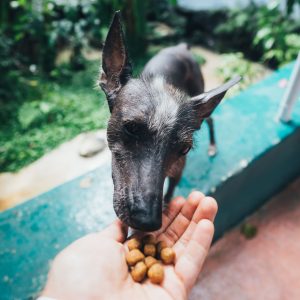






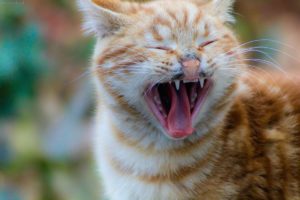



No comment yet, add your voice below!